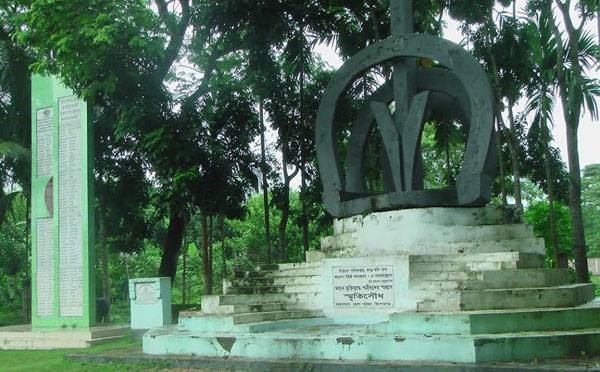
Wednesday, October 13, 1971. Another heartbreaking massacre took place in the morning on this day in 1971. Paki executioners entered Kishoreganj on 19th April and were expelled from Kishoreganj on 4 December 1971.The final form of their cruelty was witnessed by the locals on 13th October. Approximately 400 innocent villagers were killed that day. They were beaten with rifle butts, stabbed with bayonets and shot. Razakars and brokers of the area fueled the slaughter of Paki animals that day.
The Kishoreganj-Nikli road is about four kilometers south-east of Kishoreganj district headquarters. Baraitala Maidan is next to this road. The house of the acting President Syed Nazrul Islam during the war of liberation is next to Baraitala. As a result, the Paki Harmad forces and the Razakars had their eyes on the area. The village of Baraitala is located on the eastern side of the Bhairab-Mymensingh railway line. During the Johar prayers, at the behest of the Pakistani army, some local Razakars and Dalals threatened about intimated 450 people from nearby villages like Chiknirchar, Dampara, Kalikabari, Gobindpur, Tilaknathpur, Dubirchar, etc. gathered at the playground next to the railway line to protect the so-called integrity of the country and to organize against the freedom fighters.

During the meeting, some Paki animals entered the nearby village. After a while, a razakar (eyewitnesses confirmed the notorious razakar Abul Hasim of Chiknirchar village) came and spread rumors in the meeting place that the villagers had detained and disappeared two Pak soldiers. In a moment, the Pak army erupted in violence and the people present tied each other with ropes, towels and lungi so that they could not escape.
Predicting the incident, about half a hundred people took shelter in a nearby mosque. They stood on both sides of the railway line and started firing incessantly. He then stabbed them with a bayonet and beat them with a rifle butt. Among the martyrs of that day, the names of 365 people are known. The bodies of many of them were buried in mass graves.
According to eyewitnesses, the fate of the victims of the genocide did not even get the last bath of life. However, their last bath was in the warm blood secreted by the body. Funerals and graves were not the last resort of many. Rather, it was floated in Narsunda water for unknown purposes. Eyewitnesses said the killers, who were implicated in the massacre, have not been brought to justice. On the contrary, they are still wandering around Shahidnagar with heroism.
Translation Credit: Our heartiest gratitude goes to Sreemoyee Mazumder, for her wonderful and kind support.